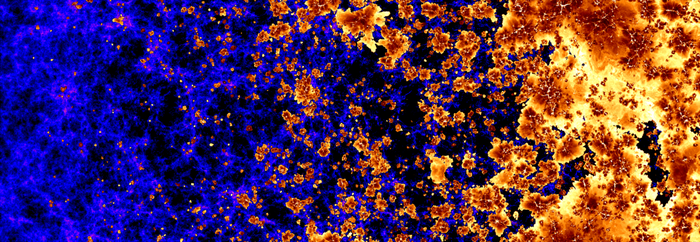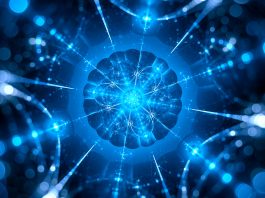The Harvard-Smithsonian Centre for Astrophysics has revealed a simulation of the early Universe, which is described to look like fireflies flickering in the darkness.
The simulation recreates the early Universe, a time after the Big Bang when the cosmos transformed from a place of complete darkness to a radiant, light-filled environment. This is a is part of a large suite of simulations described in a series of three papers accepted to the Monthly Notices of the Royal Astronomical Society.
The recreation was fashioned by researchers at the Centre for Astrophysics Harvard & Smithsonian, and the Max Planck Institute for Astrophysics. The simulations represent a monumental advancement in simulating the formation of the first galaxies and reionisation — the process by which neutral hydrogen atoms in space were transformed into positively charged, or ionised, hydrogen, allowing light to spread throughout the Universe.
What factors did scientists consider when developing this model of the early Universe?
The simulated period, known as the epoch of reionisation, took place some 13 billion years ago. The reconstruction was considered to be challenging by scientists, as it involved immensely complicated, chaotic interactions, including those between gravity, gas and radiation, or light.
“Most astronomers do not have labs to conduct experiments in. The scales of space and time are too large, so the only way we can do experiments is on computers,” explained Rahul Kannan, an Astrophysicist at the Centre for Astrophysics, and the lead author of the first paper in the series. “We are able to take basic physics equations and governing theoretical models to simulate what happened in the early Universe.”

Photo Credit: Thesan Collaboration.
What did scientists discover from this experiment?
Scientists named the simulation ‘Thesan,’ after the Etruscan goddess of dawn. The research team were able to determine interactions in the early Universe with the highest detail and precision, with their Thesan simulation having the largest volume of any previously constructed simulation.
Researchers were able to capture elements of physics in the early Universe, down to scales a million times smaller than the simulated regions, which provided unprecedented detail on properties of early galaxies and how light from these galaxies impacted gas.
This was accomplished by combining a realistic model of galaxy formation with a new algorithm that tracks how light interacts with gas, as well as a model for cosmic dust.
With Thesan, researchers can simulate a piece of our Universe spanning over a distance of 300 million light years. The team can then run the simulation forward in time to track and visualise the first appearance and evolution of hundreds of thousands of galaxies within this space, beginning around 400,000 years after the Big Bang, and through the first billion years of existence.
The simulations revealed a gradual change in the Universe from complete darkness to light.
“It is a bit like water in ice cube trays; when you put it in the freezer, it does take time, but after a while it starts to freeze on the edges and then slowly creeps in,” said Aaron Smith, co-author of the study. “This was the same situation in the early Universe — it was a neutral, dark cosmos that became bright and ionised as light began to emerge from the first galaxies.”
How will this aid with observations from the James Webb Space Telescope?
The simulations were designed to prepare for observations from the James Webb Space Telescope (JWST), which will be able to peer further back in time —approximately 13.5 billion years — than predecessors like the Hubble Space Telescope.
“A lot of telescopes coming online, like the JWST, are specifically designed to study this epoch,” noted Kannan. “That is where our simulations come in; they are going to help us interpret real observations of this period and understand what we are seeing.”
“Real telescope observations and data will soon be compared to Thesan simulations,” said the research team.
“And that is the interesting part,” added study co-author Mark Vogelsberger, an Associate Professor of Physics. “Either our Thesan simulations and model will agree with what JWST finds, which would confirm our picture of the Universe, or there will be a significant disagreement showing that our understanding of the early Universe is wrong.”
However, scientists will not know how the different aspects of their model fares until the first observations come in, which will cover a wide range of topics, including galaxy properties, and the absorption and escape of light in the early Universe.
“We have developed simulations based on what we know,” said Kannan. “But while the scientific community has learned a lot in recent years, there is still quite a bit of uncertainty, especially in these early times when the Universe was very young.”
The simulations were created using one of the world’s largest supercomputers, the SuperMUC-NG, over the course of 30 million CPU-hours. The same simulations would have required more than 3,500 years to complete on a normal computer.
Additional scientists who make up the Thesan team are Lars Hernquist of the CfA, Enrico Garaldi, Ruediger Pakmor, and Volker Springel, from the Max Planck Institute for Astrophysics.
To keep up to date with our content, subscribe for updates on our digital publication and newsletter.








